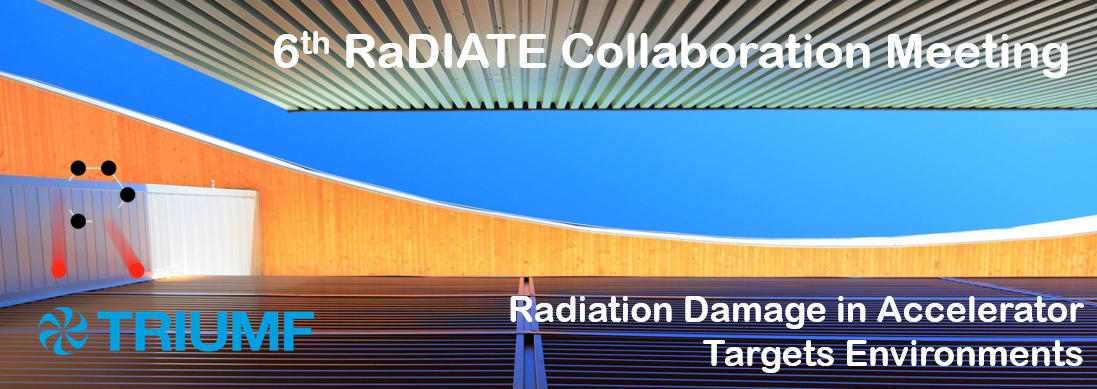Speaker
Mr
Abraham Burleigh
(Illinois Institute of Technology, Fermi National Accelerator Laboratory)
Description
Neutrino targets are constantly irradiated by high-energy protons to produce secondary particles that decay into neutrinos. Over time, radiation damage effects the macroscopic physical and structural properties of target materials and result in shortened operation lifetimes. The resulting decrease in the material’s thermal shock resistance combined with greater embrittlement results in an increased chance of component failure. The DUNE experiment at LBNF calls for a 2+MW, 60-120 GeV pulsed proton beam which is expected to push targets and other beamline components to new levels of damage; therefore, it is vital to predict what macroscopic effects may result. However, directly studying material properties of targets exposed to high-energy proton accelerators is frequently unrealistic. This is due to both the high residual dose rate of samples and the high user costs associated with these facilities. Additionally, high-energy proton irradiations have the disadvantage of a very slow number of displacements per atom (DPA) accumulation rate, for instance samples irradiated at the Brookhaven Linac Isotope Producer (BLIP) accumulated just 0.11 DPA during a 55 day irradiation. This results in an extremely long time to reach the total accumulation levels expected for the DUNE experiment. A plan for determining equivalent low-energy ion irradiation conditions that will induce the same level of damage observed in previously failed targets and expected in future higher intensity targets has been initiated at FNAL. The specific advantages of ion irradiation over high-energy protons include high DPA/s resulting in short irradiation sessions, low operating costs, and no risk of sample activation. After graphite samples have been irradiated by low-energy ions, the post-irradiation-examination (PIE) results will then be compared to previous results obtained by members of the RaDIATE collaboration. This includes PIE work done on a failed NT-02 graphite target fin and on samples from high-energy irradiations performed at BLIP. The incident ions will be helium (He++) which has been chosen due to its combination of high damage rate and significant penetration depth as compared to protons/electrons and high-Z ions respectively. Irradiation by He++ ions at 5MeV is predicted to reach 1 DPA near the surface in only ≈30hrs allowing for much more rapid irradiation cycles resulting in more possible iterations of the experiment. PIE work on the irradiated graphite will focus on: DPA, swelling and lattice spacing changes, changes in mechanical stress, strain and embrittlement, and thermal properties. The proposed irradiation will be performed at the Michigan Ion Beam Laboratory (MIBL) at the University of Michigan utilizing the 1.7MV ”Maize” Tandem particle accelerator and costing roughly $100/hr. For future experiments helium ion implantation can also be performed at the same facility using a dedicated low-energy implanter allowing for simultaneous damage inducement and implantation.
Primary author
Mr
Abraham Burleigh
(Illinois Institute of Technology, Fermi National Accelerator Laboratory)

